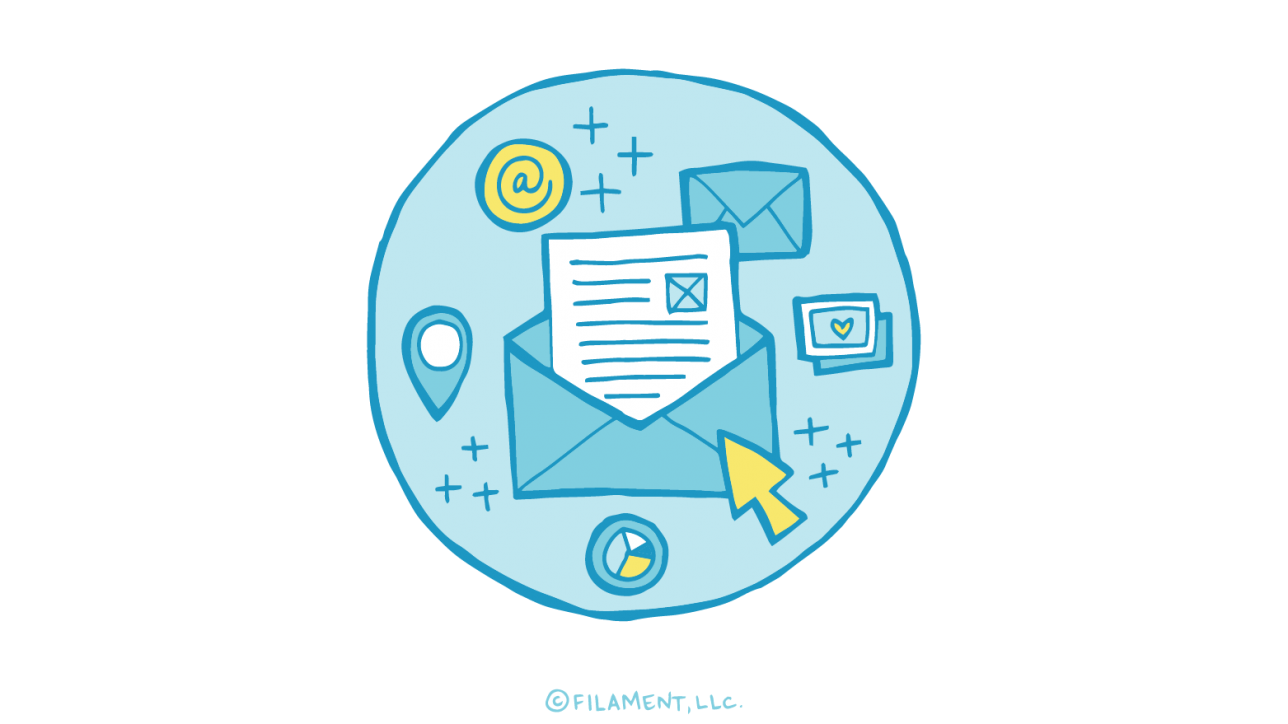Today we continue on our journey toward creating an integrated digital marketing campaign. We’ve covered getting to know our target audience, identifying prime channels for our audience and identifying the key content types our audience wants. Now we’ll discuss creating a formal, documented strategy and identity for your content.
Strategy
All the listening and learning we did in the earlier steps will help us create a strategy shaped around our customers. Make it a document that everyone on your team understands, respects, finds inspiring, and knows how to act on. Good strategy motivates, is simple to explain and carry out, and offers a good rationale for what you’re doing. It should also do these three things:
- Define your purpose and direction
- Plan how you’ll meet your goals
- Bring together your resources
A great way to put together a documented strategy is to use the PASTA model. PASTA stands for Purpose (or Problem), Aim, Strategy, Tactics, and Action.
Purpose
Consider why you do what you do. What’s your mission? Alternatively, the ‘P’ can stand for Problem. What problem are you trying to solve? Shape your answers into a single statement that’s short, memorable, and inspiring.
Aims
What are your goals? What are you trying to accomplish? As you’re writing down your goals, make sure they’re SMART: specific, measurable, attainable, relevant and time-bound.
Strategy
How are you going to meet your goals? If your goal is to get 200 people signed up for your service by the end of the year, your strategy might be to make people aware of your service.
Tactics
What steps will you take to carry out your strategy? What tools, techniques and channels will be used? Write a detailed action plan that includes the creation, repurposing, amplification, and distribution of content across all your digital channels. Each element should be set up to drive traffic toward your primary objective. For our example above, your tactics might include improving your website content for ranking, starting an email newsletter, and being more consistent with your social media.
Actions
This steps includes the Who, Where and When for each of your tactics. Who’s going to create that AdWords campaign? Who will design your email newsletter? When and how often will your post to your Twitter account? Create a timetable, determine a budget, and designate people for each action.
Identity
With our strategy in hand, it’s time to concept an identity that will reinforce our brand. This identity, unique to your business, includes what your brand says, what its values are, how you communicate its concepts, and which emotions you want your customers to feel when they interact with your business. As with strategy, it’s important to create a well-defined identity for your brand.
Values
Brand values are the desired set of experiences or associations a business wants customers to make with its products, services, or identity. Before you start defining your voice and visual identity, take some time to define your values by documenting the following:
- What do you stand for?
- What do you talk about?
- What makes you stand out?
You want a clear picture of what your brand stands for and how you want it perceived by your customers.
Voice
A large part of what we say is how we say it. With everything you say, communicate your company’s style, the passion and expertise of your team, and how your customers can benefit from your uniqueness. To create a consistent brand voice, you need to come up with a definition. Write down three to five words that your audience would use to define your company and then focus your communication style around those words.
Design
In order to create a cohesive look, establish all the elements that make up your basic look and feel, your graphic identity, including the following:
- Logo
- Library of logo lockups
- Key colors
- Additional color options
- Typefaces
- Standard typographic treatments
- Consistent style for images
- Library of graphic elements (for example: background texture, line style treatments, use of white space, color blocks)
Once your visual identity is defined, put it to use in all your content across all channels.
User Experience
User experience affects brand identity, too. Your content needs to be usable and look great on every device your audience uses, be that a mobile phone, tablet, laptop or desktop. A positive user experience has a direct correlation to positive brand perception.
Every piece of content you create should help reinforce your business’s brand identity. That brand identity is continually evolving and will require continued attention and adjustment as your business grows or changes.
With a documented strategy and identity in place, you’re well on your way toward creating an integrated digital campaign. Check back in a couple of weeks as we wrap up our series.
Contact Filament to learn more about creating a digital campaign that will shine a light on your brand.


